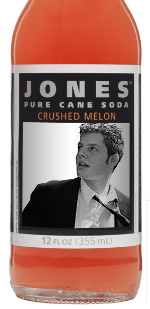Cause Branding is Cool, Just Don't Forget the Cause

I'm pretty fascinated by this campaign YouthNoise has been conducting alongside Virgin, which uses mobile in ways that are creative, considering its challenges.
To raise awareness about teen homelessness, the company put together a 46-part novella via text message. Every day an opt-in teen received a couple of texts a day that continued the story. And at the end of the campaign, the more emotionally involved got to make contributions to the ending.
Considering the subject matter, the novella was popular, but sort of a buzzkill. In retrospect, Ginger Thomson of YouthNoise said she wouldn't conduct that same campaign again with such a sad story.
Can you imagine throwing open a magazine full of bummed-out models that seem to hate life? Oh wait, most of them already look like that.
Another thing YouthNoise has done is develop relationships with American Eagle and Levi's, two companies that have a lot of extra clothes on-hand. Text "karma" to 68405, and an article of clothing is donated to a homeless teen.
The trick to using technology in cause-related efforts is to keep things simple. In the end, it's all about making it easier to do good in the world and make that propensity a lifestyle, rather than a brand.
Cause pushers also add that an effective campaign isn't about selling something. That's uniquely liberating: when you don't need to focus much on your brand or product, you can just tell your story.
YPulse's closing keynote was conducted by Peter van Stolk of Jones Soda, a guy who impressively built a brand by sparking enthusiastic user participation even before the CGM crackola was making its rounds. Did we mention he's a big cause-pusher?
Jones is a brand that I think can be characterized by its quirky flavors and unique branding. It uses photographs from users on all its bottled drinks.
"We get a lot of porn," he admits. (For the record, there's no porn on the bottles.)
When the brand was developing, Jones considered its demographic and put itself where they were - odd places to find soda, like head shops and skater shops. People in orange prison jumpsuits delivered the orders - a method that drew the attention of cops more than once.
The profits generated by Jones are actually eclipsed by the profits he generates doing the talk circuit and discussing Jones. These latter funds he donates entirely to charity.
As a result, the Jones brand is responsible for helping build schools and other public assistance efforts targeted to kids.
The Jones CEO's candidness seemed to awaken something meaningful in other marketers, many of which walked away buzzing about the brand and the man himself.
"He's the real thing," a starry-eyed rep from Premise told me. "This is really what he believes in."
Is that to say authenticity matters as much to the jaded creative as it does to the jaded teen?
I walked away with a statement of van Stolk's ringing in my head: The world doesn't need another soda.

